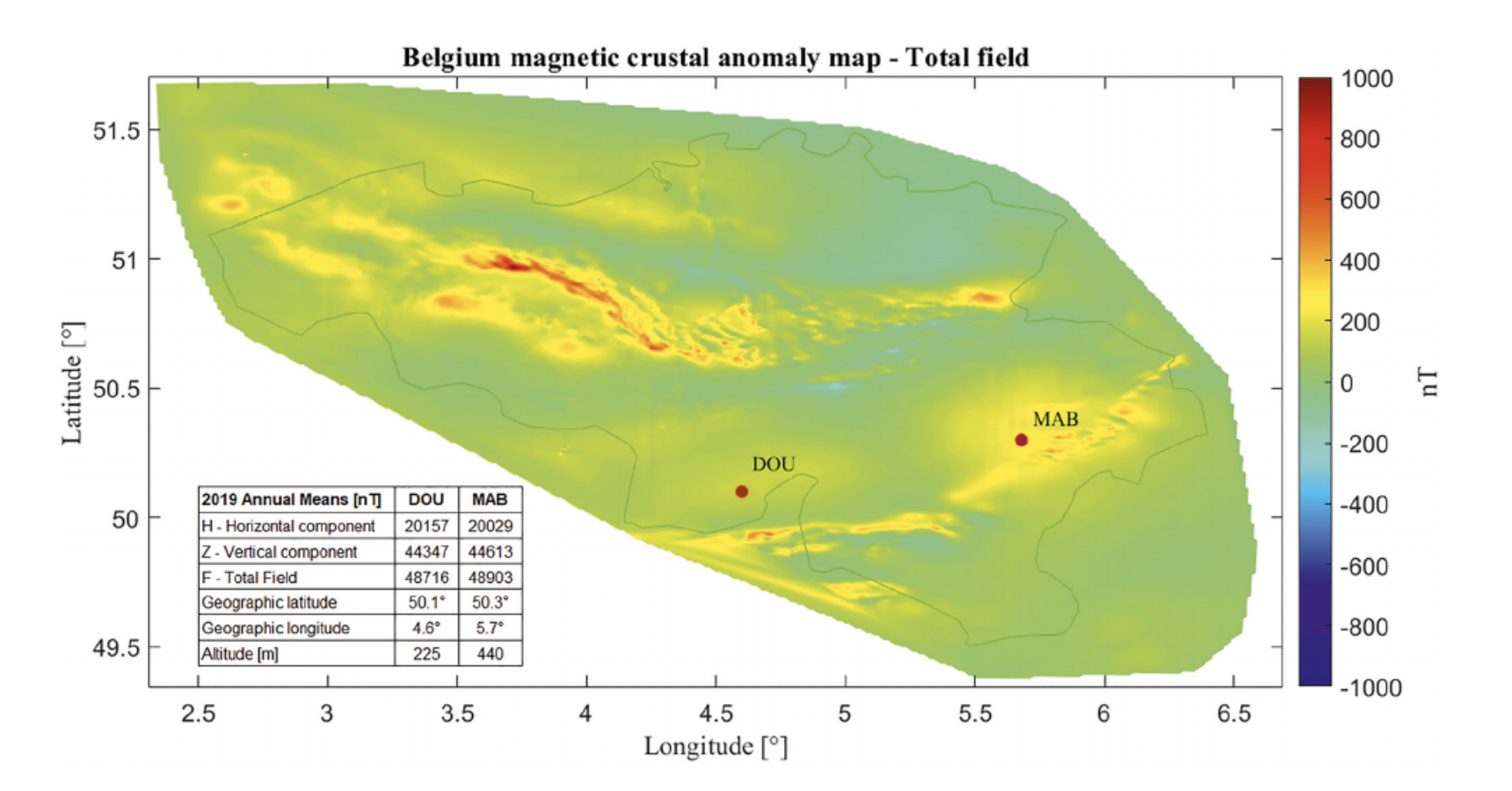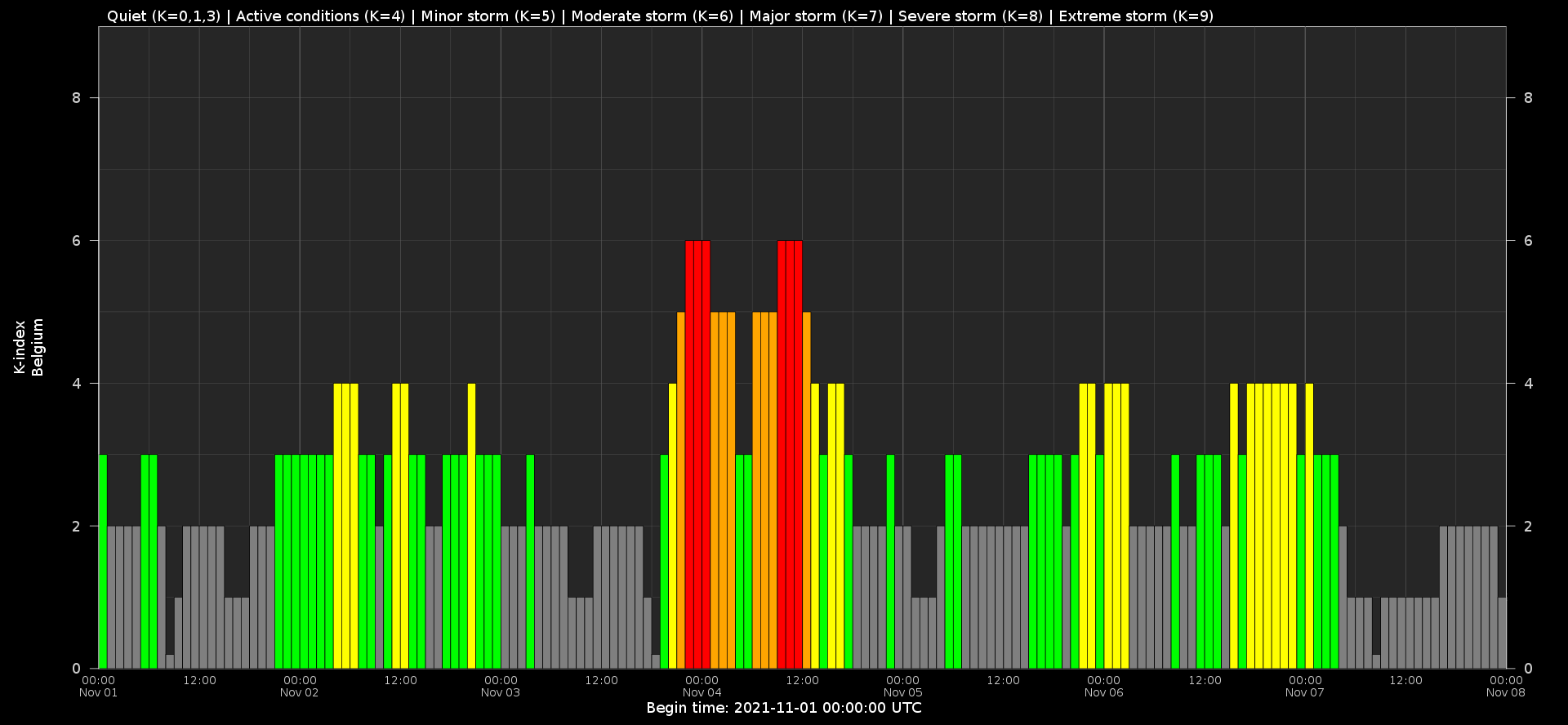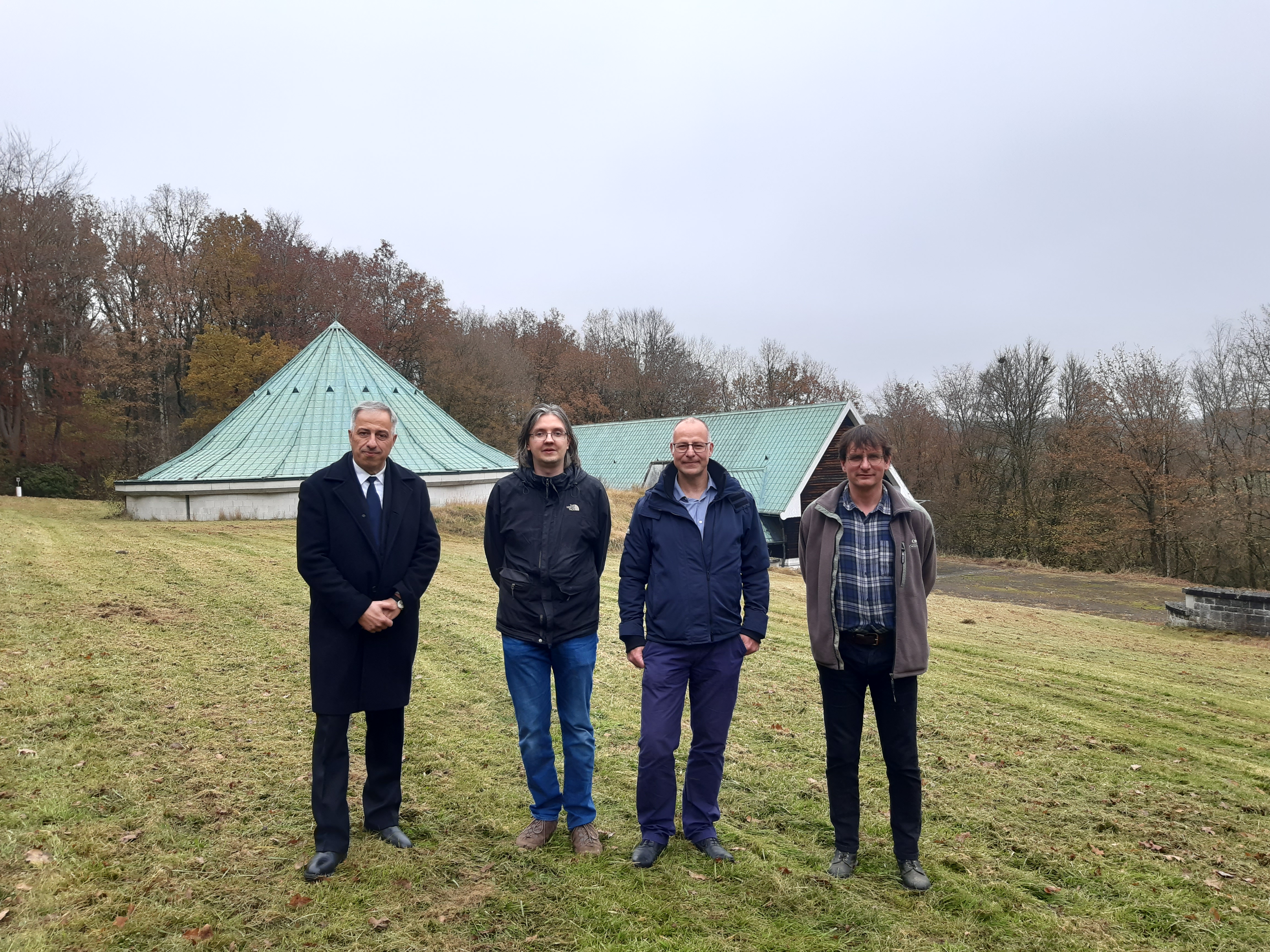We proudly present K_Bel: a new, local K-index used to monitor the variations in the magnetic field. It is based on data from two independent magnetometers located in the magnetic observatories of Belgium: Dourbes and Manhay (the Intermagnet codes are DOU and MAB respectively).
 Figure 1: Location of the RMI geomagnetic observatories, shown here on a map of the crustal magnetic anomaly of Belgium. The distance between the observatories is about 80 km. (Figure taken from Verhulst et al., 2021)
Figure 1: Location of the RMI geomagnetic observatories, shown here on a map of the crustal magnetic anomaly of Belgium. The distance between the observatories is about 80 km. (Figure taken from Verhulst et al., 2021)
Why a local K-index?
As we increasingly rely on technologies that can be affected by geomagnetic disturbances, e.g. GNSS systems, not only major geomagnetic storms are worth being monitored, but also the much more frequent lower intensity events. The well known Kp-index is a planetary geomagnetic activity scale, ranging from 0 to 9, based on ground-based magnetic field variations. Besides this global index, a local K-index provides a more accurate geomagnetic activity level over a limited area (a few thousands km²). Such a local index can detect smaller disturbances, and can often detect them earlier than a global one. The Royal Meteorological Institute of Belgium has been providing a local K-index in real time, based solely on the observations from Dourbes for about ten years. However, over this period some issues have come to light where including the data from the Manhay observatory presents some advantages.
What are the advantages of K_Bel in comparison with a local K-index based on one single observatory?
Those advantages are directly related to the close proximity of the two observatories: the distance between the two sites (about 80km) is sufficient to consider local conditions as independent, but remains small enough so that the real variations recorded by the magnetometers must be similar.
The first major advantage is in the quality of the automated real-time data validation process. The validation of geomagnetic data is a challenging issue because magnetic data can significantly change from one second to another, unpredictably, resulting in a difficult process of identifying outliers. For instance, a spike due to a local power-grid issue may significantly influence the index if not removed. The real time comparison of the two data sets offers a reliable tool to eliminate any outlier. Since both observatories can be assumed to provide independent measurements, any variations caused by technical issues, interference, etc. will only be present in one data set. This provides a cleaner data set than what can be obtained in real-time from a single observatory, thus the K_Bel index is more accurate than any single station index.
The second major advantage is to guarantee the operational service availability. A local K-index based on one single observatory fails if the related magnetic observatory fails to deliver data, and the combined index K_Bel needs data from both observatories to be available. However, in the new operational system, single observatory indices KDOU and KMAB are still calculated for both observatories in parallel with the combined index. Availability of at least one of the three indices is guaranteed 24/7 (more than 99% of time, based on data from the past years) even if one of the two observatories temporarily fails to deliver data.
 Figure 2: K_Bel index covering the period from November 1 to 7, 2021. This week showed plenty of geomagnetic activity with the arrival of ICMEs and a high-speed-stream. For more details, check out the 'Review of geomagnetic activity' section of this Newsletter.
Figure 2: K_Bel index covering the period from November 1 to 7, 2021. This week showed plenty of geomagnetic activity with the arrival of ICMEs and a high-speed-stream. For more details, check out the 'Review of geomagnetic activity' section of this Newsletter.
More background information and real-time K-indices (both the single station indices and K_Bel) can be found here: http://ionosphere.meteo.be/geomagnetism/, or in the paper describing the operational system: Verhulst et al. (2021, https://agupubs.onlinelibrary.wiley.com/doi/10.1029/2020SW002709 ).
 Figure 3: The K_Bel team, here posing in front of the Dourbes Observatory, were very excited to present their new index. (From left to right: Stan Stankov, Tobias Verhulst, François Humbled, and Stephan Bracke)
Figure 3: The K_Bel team, here posing in front of the Dourbes Observatory, were very excited to present their new index. (From left to right: Stan Stankov, Tobias Verhulst, François Humbled, and Stephan Bracke)





